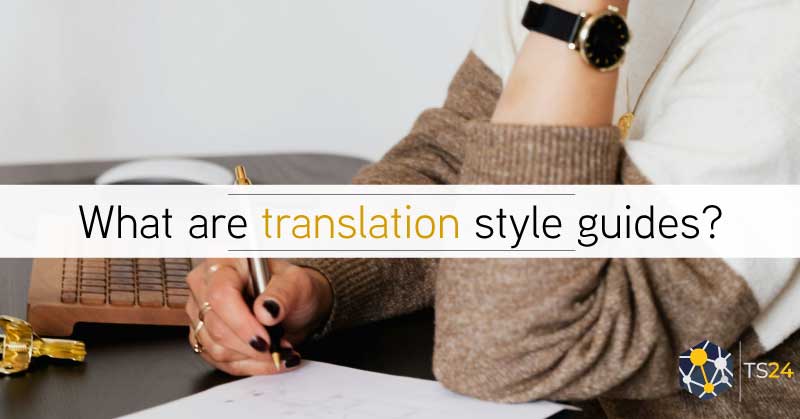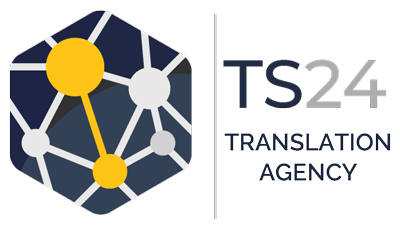What Are Translation Style Guides & Why Are They Important
What do you call a “cookie” in English? Biscuit? Saltine? Cracker? Or something else?
Everyone has a different translation for common words and phrases, which can create confusion, especially when translating for business or commercial purposes.
A translation style guide eliminates this problem by setting the standards for how words and phrases should be translated in a specific context or industry. It also contains other pointers, such as formatting, localisation, punctuation, spelling, etc.
Today, our translation experts discuss why sticking to a translation style guide is essential, especially for translation services used within the business and corporate sectors.
What Is a Translation Style Guide?
When you write academic essays or assignments, you have to follow a style guide. It could be the good old Oxford Style, MLA, or something else. Similarly, there’s a style guide for translations, too. However, translation style guides aren’t consistent across professional marketing translation services or industries.
Instead, a style guide is a reference document that helps translators and proofreaders ensure consistency in translating terminologies and languages.
Components of a Translation Style Guide
Here are some guidelines you can expect to find in a translation style guide.
- Spelling: How should words be spelt in the target language? Are there any preferred spellings or variations that should be avoided?
- Punctuation: Punctuation, such as quotation marks, ellipses, exclamation marks, and dashes, is imperative to a language’s linguistic style. A translation style guide specifies when to use punctuation and which type should be used. For example, should you use an Oxford comma in English
- ? Similarly, when translating official or legal documents, a style guide may instruct the translator to avoid using exclamation marks.
- Typography: The style guide specifies when to use uppercase or lowercase letters, italics, bold, abbreviations, and other font styles. These rules will differ across industries. For example, in marketing, using bold and italicised text may be preferred for emphasis, while legal documents may require specific font sizes for headings.
- Adaptations: Will the units be metric or imperial? This is important to keep in mind when localising content. Also, how will the translator write dates and phone numbers?
- Localisation: Even in the same country, people may know things by different names. For example, ”mobile phone” and ”cell phone” are two names for the same thing in UK English and US English. The style guide would specify which to use to keep the translation consistent throughout.
- Tone: The tone and voice of a translation should match the original content. For example, if the source text is humorous, the translation should also convey that same humour in the target language.
If a client has specific preferences, they are also included in the style guide. For example, they may not want to use slang terms. Similarly, in some regions, masculine verbs are used instead of gender-neutral forms for writing. The style guide will outline these preferences, too.
EXPERT’S TIP: How important are translation services for effective business training? Find out here!
Why Is It Important to Follow a Translation Style Guide?
A translation style guide simplifies and streamlines the translation process, ensuring a seamless and error-free experience. Here’s how it works.
Consistency in Translation
What if you, as a customer, read a translation instructions manual for a foreign-made product, and the components and parts are referred to with different names at every step? It would make understanding the instructions much more difficult. The same happens when there’s inconsistency in legal, medical, commercial, financial, or certified translation services. A translation guide helps prevent mishaps and confusion.
Brand Recall and Identification
When you, as a client, work with a translation agency, you want them to adhere to a style guide. Otherwise, your marketing material, such as billboards and social media, can be translated differently for each channel. Due to these inconsistent translations, your brand’s image and message can be diluted.
Let’s say you create a clever slogan for a product you’re launching in a new country. However, you translate it in three different ways. The slogan will lose its impact since the different versions won’t ring a bell in your customers’ minds. But if people see the same slogan on social media, brochures, billboards, emails, and product packaging, they’ll hardly forget it.
Translation Efficiency
With a translation style guide in place, there’s less need for back-and-forth communication between clients and translation agencies. This saves time that would otherwise be spent on correcting translations, assigning them for review, and so on. A style guide also minimises the need for multiple edits, further enhancing efficiency.
EXPERT’S TIP: Find out how professional translation and interpreting services can boost your brand’s growth globally!
What to Include in a Translation Style Guide
Marketing translation service providers are experts at following brand style guides for marketing translations. But how do you compile one?
Here are some sections to add to your translation style guide.
- Capitalisation
- The first, second, or third-person voice
- Jargon, slang, puns,
- Numerals, especially in currency, date, and time
- Citations and attributions
- Slogans and headlines
- Idioms, or culturally specific references
- Tenses
- Trademarks and copyrighted terms
You should also include company-specific terminology, like product names and industry-specific terms. Also, specify how your audience should be addressed. For example, the translation for a dating app’s audience will differ from a retirement planning company’s target demographic.
Examples to Follow
The World Health Organisation follows a house-style guide for its translations. In 2016, the organisation granted translation rights for its publications to different entities. The funding allowed 273 publications to be translated into 58 languages.
However, since WHO cannot risk miscommunication or mistranslations, all 58 translation entities had to adhere to the same style guide. The second edition of the WHO style guide is available on their website.
The European Commission also has an English-style guide for its authors and translators in the EU. Since all EU countries speak different languages, the English style guide is meant to be used as a lingua franca for all translations. It also ensures that writers from various countries stick to a similar version of English rather than following their own spelling and punctuation styles.
Final Thoughts
Having a consistent style guide ensures that your translated materials maintain a uniform tone, terminology, and style, which is crucial for effective communication across different languages.
By partnering with a professional translation service agency like TS24 and utilising a well-crafted style guide, you can enhance the quality and consistency of your translated materials, ultimately strengthening your brand’s presence in international markets.
About TS24
Translation Services 24 (TS24) is an expert translation agency in London with expert translators in over 200 languages. We work with clients in all corporate and public industries and specialise in sector-specific linguistic solutions. With over a decade of experience in the industry, 15+ million words converted every year and 100,000+ projects completed, TS24 is a leading provider of expert translations and interpretation services and an officially certified member of the ATC. Contact TS24 here. You can also read all of our recent articles here.
Follow Translation Services 24 on Social Media






